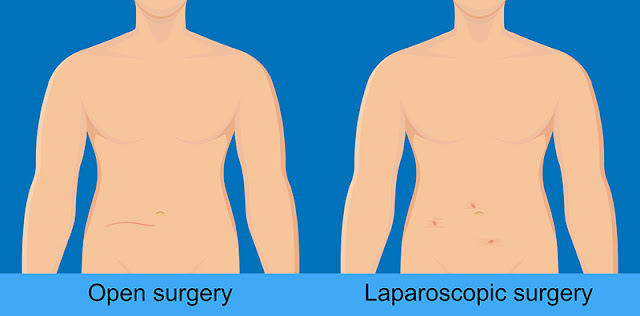Different Types of Hernia
A hernia is a bulge that occurs when an organ penetrates and pushes through a weak spot in the muscular wall that is holding it. Usually, hernias are seen predominantly in the abdominal region, mainly in the belly or groin areas. This is primarily due to an increase of pressure in the abdomen due to the lifting of heavy objects, severe constipation or diarrhoea or persistent coughing. Obesity and congenital defects can also result in a hernia.
People who have hernia usually experience a small lump in the belly or at the site of the scar where surgery was performed. This lump appears to disappear when it is pressed or in the lying down posture. However, there may be pain while bending, coughing or lifting. The presence of hernia may be confirmed by physical examination, ultrasound scan or computerized tomography.
People who have hernia usually experience a small lump in the belly or at the site of the scar where surgery was performed. This lump appears to disappear when it is pressed or in the lying down posture. However, there may be pain while bending, coughing or lifting. The presence of hernia may be confirmed by physical examination, ultrasound scan or computerized tomography.
Types of Hernia
- Inguinal Hernia - This is the most common type of hernia. It occurs more often in men. Inguinal hernia happens when the intestine forces itself through a weak point or tears the lower abdominal wall particularly in the inguinal canal creating a protruding bulge. The symptoms are minimal or absent in many cases. But taking prompt treatment is necessary to prevent further discomfort and protrusion.
- Hiatal Hernia - In this hernia, a portion of the stomach pushes itself through the diaphragm into the chest cavity. Hiatal hernia occurs usually in adults who are aged fifty years or more. If it happens in children, it is due to defects at birth. This hernia may cause gastrointestinal reflux wherein the contents of the stomach leak back into the oesophagus causing discomfort and burning sensation.
- Umbilical Hernia - Here, the intestine bulges through the abdominal wall near the navel or belly button. Umbilical hernia occurs in babies and young children. Usually, it resolves on its own due to the strengthening of the abdominal wall muscles when the child becomes one or two years old. Surgical intervention is needed if the problem does not disappear even when the child is five years old. This hernia may occur in adults due to obesity, pregnancy or fluid accumulation in the abdomen.
- Ventral Hernia - This type of hernia happens due to bulging of tissue through an opening in the abdominal muscular walls or at the site of the surgical incision. It may occur at birth or later during lifetime due to obesity, pregnancy or strenuous activity. Strangulated ventral hernia is an emergency medical condition that needs surgery. Here, the intestinal tissue gets tightly entangled in the abdominal wall opening resulting in the stoppage of blood circulation.
- Femoral Hernia - In femoral hernia, there is bulging of the tissue of the lower belly into the upper thigh just below the crease of the groin. It occurs more often in females than in males and is difficult to diagnose merely through physical examination.
- Epigastric Hernia – When the fat pushes through the weakened portion of the belly wall, this hernia occurs. It commonly happens in the middle belly area between the breast bone and the belly button or navel. Epigastric hernia may not display evident symptoms but causes pain in the upper abdomen sometimes.
Treatment for Hernia
Treatment is based on the severity of symptoms and bulge size. It is generally a choice between watchful waiting or monitoring under medical supervision and surgical correction. Over-the-counter and prescription medications may help in easing the discomfort. Sometimes, a supportive truss is recommended to hold the hernia in place.
The hernia surgery procedure is of two types:
- Open hernia repair in which hernia is closed with sutures, mesh or a combination of both after making a surgical incision.
- Laparoscopic hernia repair in which the entire procedure is guided by a laparoscope and minimally invasive techniques may be used. Here, recovery is quicker and the probability of complications is lesser though it is expensive.
Patients who have hernia symptoms or discomfort must consult the hernia specialist doctor for proper diagnosis without neglecting it.











Leave a Comment